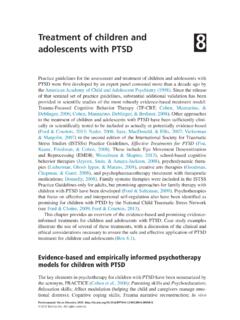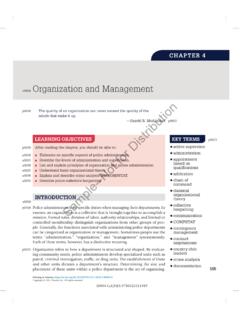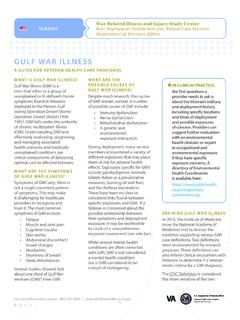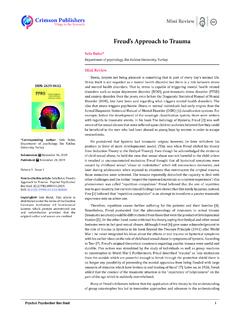Transcription of 3. Etiology of PTSD What causes PTSD? - Elsevier
1 Posttraumatic Stress Disorder. DOI: 2015 Elsevier Inc. All rights of ptsd : what causes PTSD? 3 Although most people will encounter a traumatic stressor at least once, and often several times, in their lives, most people who experience a traumatic stressor do not develop ptsd (Breslau, 2002; Kessler et al., 2005; Kessler, Sonnega, Bromet, & Hughes, 1995). Therefore, the question of what causes ptsd cannot simply be answered by referring to its definition: a disorder whose symptoms occur following exposure to a traumatic stressor.
2 In fact, there is controversy as to whether ptsd symptoms really are caused by exposure to traumatic stressors, because all of the symptoms, except for memories, flashbacks, and nightmares of traumatic events, could occur regardless of whether a person has experienced a traumatic stressor. The ptsd symptoms that are not by definition tied to a traumatic stressor even the two symptoms that are defined as psychological or physical distress due to reminders of past stressful events actually are also symptoms of other psychiatric disorders as well as of ptsd .
3 Thus, it is important to scientifically examine the assumption that ptsd is caused by exposure to traumatic stressors (Box ). Scientific evidence indicating that ptsd is most likely to occur not just when a traumatic stressor has occurred but when the objective severity of exposure to traumatic danger or harm is more extreme provides important (albeit not definitive) support for the view that exposure to a traumatic stressor plays a key role in ptsd , as is discussed later in this chapter (see section on the Impact of Stressor Exposure).In this chapter, a more nuanced view of the causes of ptsd is presented than the commonsense version that ptsd is caused simply by exposure to a traumatic stressor.
4 Research demonstrates that ptsd is a multicausal phenomenon, meaning that it is the product of a combination of a number of potential causes . Rather than describing the factors that contribute to the development of ptsd as causes , it is clearer and more factual to describe them as risk factors and protective factors that is, things that increase a person s risk of developing ptsd and things that reduce (or protect against) the risk of developing ptsd . As you will see, risk factors include not only exposure to a traumatic stressor but also biological, psychological, and social factors that influence whether ptsd will occur and that can protect against (but not necessarily prevent) the development of ptsd (Box ).
5 (Continued)Box Key Points 1. The Etiology of ptsd refers to the study of the causes of ptsd . Psychological phenomena such as ptsd are rarely, if ever, caused by a single factor or any single specific combination of factors (such as specific genes or personality traits or life Posttraumatic Stress Disorder82experiences) but instead are the product of complex interrelationships among many different biological, environmental, and life experience factors. 2. ptsd is not caused solely by exposure to traumatic stressors. Although, by defini-tion, ptsd can only occur if a person has been exposed to a traumatic stressor, most people about 80 90% who are exposed to traumatic stressors do not develop ptsd .
6 Therefore, exposure to a traumatic stressor is a necessary but not sufficient cause that contributes to but does not alone account for ptsd . 3. ptsd is the result of large number of different combinations of risk and protec-tive factors that influence a person s life trajectory (see Chapter 2) after exposure to a traumatic stressor. Risk factors increase, and protective factors decrease, the likelihood that ptsd will occur. 4. Some risk and protective factors begin before a traumatic stressor occurs. These preevent factors include the person s genetic characteristics (including gender and ethnocultural background, as well as subtler variations in specific genes associated with memory, learning, motivation, and emotional and behavioral problems) that are just beginning to be understood in relation to ptsd .
7 Preevent risk factors also include age (although both children and older adults actually are at lower risk generally, compared to adolescents or young and midlife adults). Other preevent risk factors for ptsd are the person s and their family members previous exposure to traumatic events and past episodes of ptsd , psychiatric or addiction problems, and interpersonal conflicts. A key preevent protective factor that lowers the risk of ptsd is access to socioeconomic resources, most importantly as a result of a higher education level and social support. 5. Female gender is a risk factor, and male gender is a protective factor, for ptsd .
8 However, it is not certain that this is directly related to genetically inborn differences between females and males, because research has shown that females and males may be exposed to different types of traumatic stressors and related risk factors (such as gender bias) as a result of social and political factors that are independent of their biological sex. 6. Persons from ethnoracial minority backgrounds may be more vulnerable ( , at greater risk) for developing ptsd than those of majority ethnocultural backgrounds. However, this may be a by-product of social and economic factors (such as racial stigma and discrimination, or poverty) rather than due to a person s ethnicity per se.
9 7. The specific experience of psychological trauma differs in many ways that may increase or protect against the risk of developing ptsd . Traumatic stressors that involve betrayal or violation of the basic safety of key relationships (such as physi-cal or sexual abuse, family violence, cruel and inhumane imprisonment, or torture), especially if this occurs during the formative years of childhood, increase the risk of ptsd 75% or more. 8. When traumatic events occur directly to the person, and when severe physical injury or pain result, the risk of or vulnerability to ptsd is higher although witnessing very horrific events or their aftermath, especially if this occurs to someone close or on a mass scale (such as genocide or war), can lead to a high risk of ptsd (see Chapter 11).
10 9. In addition to the nature of the traumatic event, certain reactions immediately or soon after the traumatic event(s) are risk factors. These are called peritraumatic risk factors because they occur during or soon after ( peri ) a traumatic event). High levels of initial distress (including large increases in physiological stress, such as Box ContinuedEtiology of ptsd : what causes PTSD? 83 Box Is ptsd Caused by Traumatic Stress? This provocative and timely question was the title of an article by Bodkin et al. (2007) in a special issue of the Journal of Anxiety Disorders.










